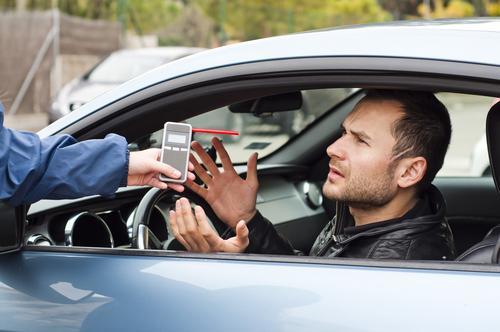How Accurate Are Breath Tests in Connecticut DUI Cases?
 Over a million Americans are arrested each year for alcohol-impaired driving. Though each state has its own procedures for performing DUI arrests and prosecutions, most arrests follow a similar process. First, a person is pulled over, and the officer may perform a variety of field sobriety tests. Then, the officer may ask a driver to blow into a portable device to get a preliminary reading of their breath-alcohol concentration, and the results of this test will be used to determine whether to make an arrest. Following an arrest, the driver will be transported to the police station, where he or she will be asked to submit to a "more accurate" breath test. However, recent investigations have found that these tests are often not so accurate after all.
Over a million Americans are arrested each year for alcohol-impaired driving. Though each state has its own procedures for performing DUI arrests and prosecutions, most arrests follow a similar process. First, a person is pulled over, and the officer may perform a variety of field sobriety tests. Then, the officer may ask a driver to blow into a portable device to get a preliminary reading of their breath-alcohol concentration, and the results of this test will be used to determine whether to make an arrest. Following an arrest, the driver will be transported to the police station, where he or she will be asked to submit to a "more accurate" breath test. However, recent investigations have found that these tests are often not so accurate after all.
Why We Should Question the Tests
The fates of many DUI cases are often sealed with the breath test. Portable breath tests, like the ones used on the roadside by police officers, are usually not admissible in court, but results from the machines that are used at the police station can be used as evidence. If the machine returns a breath-alcohol concentration of 0.08 or more, a person may face a conviction for DUI. Further, many people are pressured into submitting to these tests because penalties exist if testing is refused. In Connecticut, a person who refuses to submit to a chemical test faces a one-year driver’s license suspension with the requirement that an ignition interlock device be installed on any vehicle they drive during the suspension period.
Machines Are Often Found to Be Inaccurate But Are Used Anyways
In an investigation conducted by a small consulting company and reported by the New York Times, the Alcotest 9510 breathalyzer machine has been found to have many errors, even though it is still being used by many states’ police departments, including in Connecticut. The report written by the company stated that the machine was simple and only relied on two sensors that could detect the presence of alcohol. It also stated that the machine largely relied on proper calibration to produce reliable and accurate results and that a calculation error within the machine could round up some results.
Calibration Errors Affect Results
Machines used to test breath alcohol concentrations are not up and running right out of the box. These machines must be programmed and calibrated before they can be used. To do this, samples of known alcohol concentrations must be used so the machine has some reference to base results on. The New York Times found that in some cases, lab records were faked to show that dozens of machines in Colorado were calibrated correctly when many of them were never even touched. In another police station in Washington D.C., the person responsible for calibrating the machines had routinely entered incorrect data, causing the machines to miscalibrate and produce results that were 20 to 40 percent too high.
A Hartford, CT DUI Defense Attorney Can Help You Challenge the Results of Your Breath Test
Being convicted of a DUI can affect your entire life. Not only will it create a criminal record that will follow you for the rest of your life, but you will also be required to pay expensive fines, and you will have to deal with a driver’s license revocation. At the Woolf & Ross Law Firm, LLC, we know that breath test results are not always the most accurate. Let our skilled Connecticut DUI defense lawyer scrutinize your breath test results and fight for your rights in court. Call our office today at 860-290-8690 to schedule a free consultation.
Sources:
https://www.nytimes.com/2019/11/03/business/breathalyzer-investigation-takeaways.html?action=click&module=RelatedLinks&pgtype=Article
https://www.nytimes.com/2019/11/03/business/drunk-driving-breathalyzer.html?smid=nytcore-ios-share






